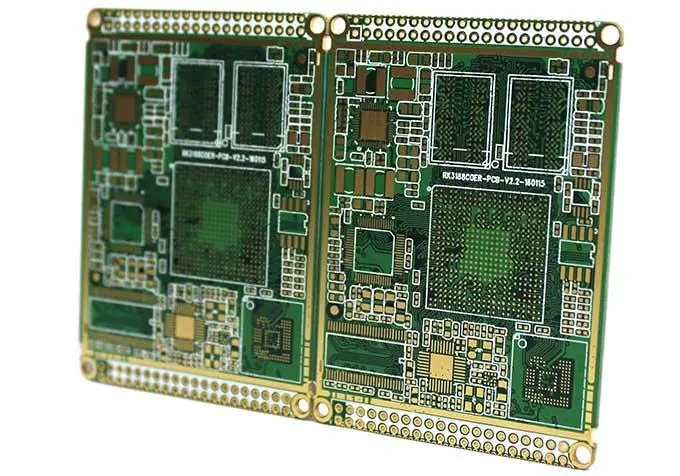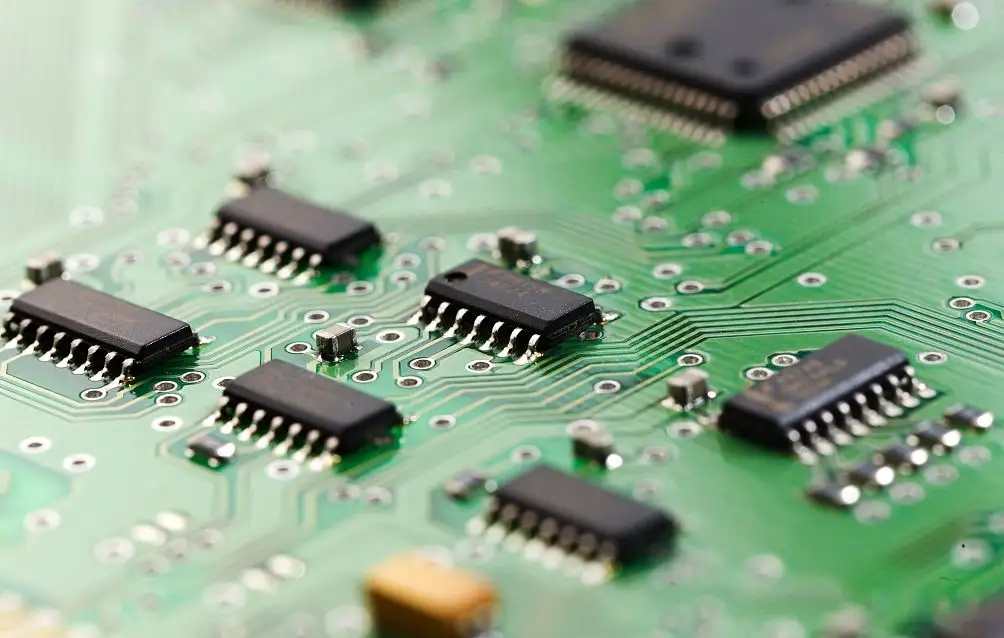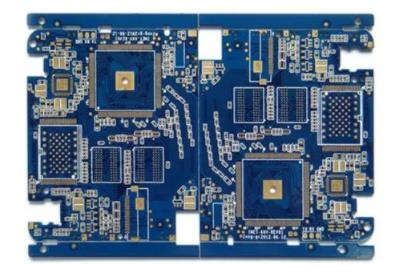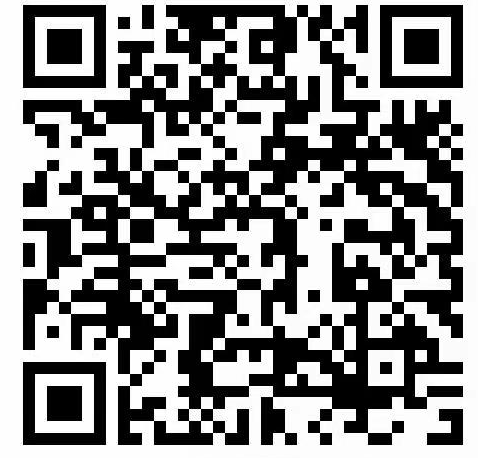
ElectronIC engineer: What are the PCB design guidelines?
circuit board manufacturing, circuit board design, PCBA processing manufacturers explain to you electronic engineers: What are PCB design guidelines?
When starting a new design, because most of the time is spent on circuit design and component selection, the PCB layout and routing stage is often not well considered due to lack of experience. If sufficient time and effort are not provided for the design of PCB layout and routing phase, problems may occur in the manufacturing phase or functional defects may occur when the design is converted from the digital field to the physical reality. So what is the key to designing a circuit board that is real and reliable in both paper and physical form? Let's discuss the first 5 PCB design guidelines that we need to know when designing a manufacturable and functional PCB.
Fine tune your component placement
The component placement stage of PCB layout process is both scientific and artistic, and the main components available on the PCB need to be strategically considered. Although this process may be challenging, the way you place the electronIC components will determine how easy it is to manufacture your circuit board and how it meets your original design requirements. Although there is a general order for placing components, such as placing connectors, installing devices of printed circuit boards, power circuits, precision circuits, and key circuits in order, there are also some specific guidelines to keep in mind, including:
Orientation - Ensure that SIMilar elements are positioned in the same direction, which will help to achieve an efficient and error free welding process.
Layout - Avoid placing SMAller components behind larger components, which may cause mounting problems due to the welding of large components.
Organization - It is recommended that all surface mount (SMT) components be placed on the same side of the board and all through hole (TH) components be placed on the top of the board to minimize assembly steps.
Finally, there is a PCB design guideline to pay attention to - that is, when using hybrid technology components (through-hole and surface mount components), manufacturers may need additional processes to assemble circuit boards, which will increase your overall cost.

Good chip component direction (left) and bad chip component direction (right)
Good element arrangement (left) and bad element arrangement (right)
Properly place power, grounding and signal wiring
After placing components, you can then place power, ground and signal wiring to ensure that your signal has a clean and fault free path. At this stage of the layout process, remember the following guidelines:
■ Locate power and ground plane layers
It is always recommended to place the power and ground plane layers inside the circuit board while maintaining symmetry and centering. This helps prevent your circuit board from bending, which is also related to whether your components are correctly positioned. For IC power supply, it is recommended to use a common channel for each power supply to ensure a solid and stable wiring width, and avoid daisy chain power connection between components.
■ Signal line routing connection
Next, connect the signal line according to the design in the schematic diagram. It is recommended to always take the shortest path and direct path routing between components. If your components need to be fixed in the horizontal direction without deviation, it is recommended that you basically route the components horizontally at the outlet of the circuit board, and then conduct the vertical routing after the outlet. In this way, the components will be fixed in the horizontal direction with the migration of solder during welding. As shown in the upper part of the figure below. The signal wiring mode in the lower part of the figure below may cause the deflection of the component with the flow of solder during welding.
Suggested wiring method (arrow indicates solder flow direction)
Unsupported wiring mode (arrow indicates solder flow direction)
■ Define network width
Your design may require different networks that will carry various currents, which will determine the required network width. Considering this basic requirement, it is recommended to provide 0.010 '' (10mil) width for low current analog and digital signals. When your line current exceeds 0.3A, it should be widened. Here is a free line width calculator to make this conversion process simple.
Effective isolation
You may have experienced how high voltage and current SPIkes in the power circuit interfere with your low-voltage current control circuit. To minimize such interference problems, follow these guidelines:
Isolation - ensure that each power supply is kept separate from the power supply ground and control ground. If you must connect them together in a PCB, make sure it is as close to the end of the power path as possible.
Layout - If you have placed a ground plane on the middle floor, make sure to place a small impedance path to reduce the risk of interference from any power circuit and help protect your control signal. You can follow the same guidelines to keep your digital and analog separate.
Coupling - In order to reduce the capacitive coupling due to the placement of large ground planes and the routing above and below them, try to cross analog ground only through analog signal lines.
Example of component isolation (digital and analog)
Solve the heat problem
Have you ever caused circuit performance degradation or even circuit board damage due to thermal problems? Because the heat dissipation is not considered, many problems have occurred that perplex many designers. Here are some guidelines to keep in mind to help solve cooling problems:
■ Identify troublesome components
The first step is to start to consider which components will dissipate more Z heat on the circuit board. This can be achieved by first finding the "thermal resistance" rating in the component's data sheet, and then transferring the generated heat according to the recommended guidelines. Of course, you can add radiators and cooling fans to keep the element temperature down, and also remember to keep the key elements away from any high heat source.
■ Add hot air pad
Adding hot air pads is useful for producing manufacturable boards, which are critical for wave soldering applications on high copper content components and multilayer boards. Since it is difficult to maintain the process temperature, it is always recommended to use hot air pads on through-hole components to make the welding process as simple as possible by slowing down the heat dissipation rate at the component pins. As a general rule, always use hot air pads to connect any via or via connected to the ground or power plane. In addition to the hot air pad, you can also add tears at the position of the pad connecting line to provide additional copper foil/metal support. This will help reduce mechanical and thermal stresses.
Typical connection mode of hot air pad
Hot air pad science popularization
The engineers in charge of the process or SMT technology in many factories often encounter solder empty, de soldering or cold solder problems of circuit board components. No matter how the Process conditions are changed or the furnace temperature of reflow soldering is adjusted, there is a certain rate of solder failure. What the hell is going on? Aside from the problem of oxidation of components and circuit boards, after investigating the root cause, it is found that most of these types of poor soldering are actually due to the lack of wiring design of the circuit board, while Z is commonly connected to a large area of copper sheet on a certain number of solder legs of components, resulting in poor soldering after reflow soldering of these component solder legs, and some hand soldered components may also cause false soldering or soldering due to similar situations, Some even damaged the components due to excessive heating. In general, PCB often needs to lay a large area of copper foil for power supply (Vcc, Vdd or Vss) and grounding (GND, Ground) during circuit design. These large area copper foils are generally directly connected to the pins of some control circuits (ICs) and electronic components. Unfortunately, if we want to heat these large areas of copper foil to the temperature of tin melting, it usually takes more time (that is, the heating will be slower) than independent pads, and the heat dissipation will be faster. When one end of such a large area of copper foil wiring is connected to small components such as small resistance and small capacitance, while the other end is not, it is easy to have welding problems due to the inconsistent time of tin melting and solidification; If the temperature curve of reflow soldering is not well adjusted, and the preheating time is insufficient, the solder legs of these components connected to a large piece of copper foil are easy to cause the problem of faulty soldering because they cannot reach the tin melting temperature. During manual welding, the solder legs of these components connected to a large piece of copper foil cannot be welded within the specified time due to fast heat dissipation. The common undesirable phenomena of Z are solder wrapping and false soldering. Solder is only soldered on the solder leg of the component and not connected to the pad of the circuit board. From the appearance, the whole solder joint will form a ball; What's more, the operator kept increasing the temperature of the soldering iron in order to solder the solder leg onto the circuit board, or heated it too long, so that the component was damaged beyond the heat resistance temperature without knowing it.
Now that we know the problem points, we can find solutions. Generally, we will require the so-calLED Thermal Relief pad design to solve this kind of welding problems caused by large pieces of copper foil connecting elements.
Check your work
When you are making all parts together, it is easy to find problems at the end of the design project. Therefore, double and triple checks on your design work at this stage may mean that the manufacturing is successful or failed. In order to help complete the quality control process, we always recommend that you start with Electrical Rule Check (ERC) and Design Rule Check (DRC) to verify whether your design fully meets all rules and constraints. With these two systems, you can easily check the gap width, line width, common manufacturing settings, high-speed requirements and short circuits. When your ERC and DRC produce error free results, it is recommended that you check the wiring of each signal, from the schematic diagram to the PCB, by checking one signal line at a time to carefully confirm that you have not missed any information. In addition, use the detection and shielding functions of your design tools to ensure that your PCB layout materials match your schematic. Circuit board manufacturing, circuit board design, PCBA processing manufacturers explain to you electronic engineers: What are PCB design guidelines?
然后
联系
电话热线
13410863085Q Q

微信

- 邮箱











